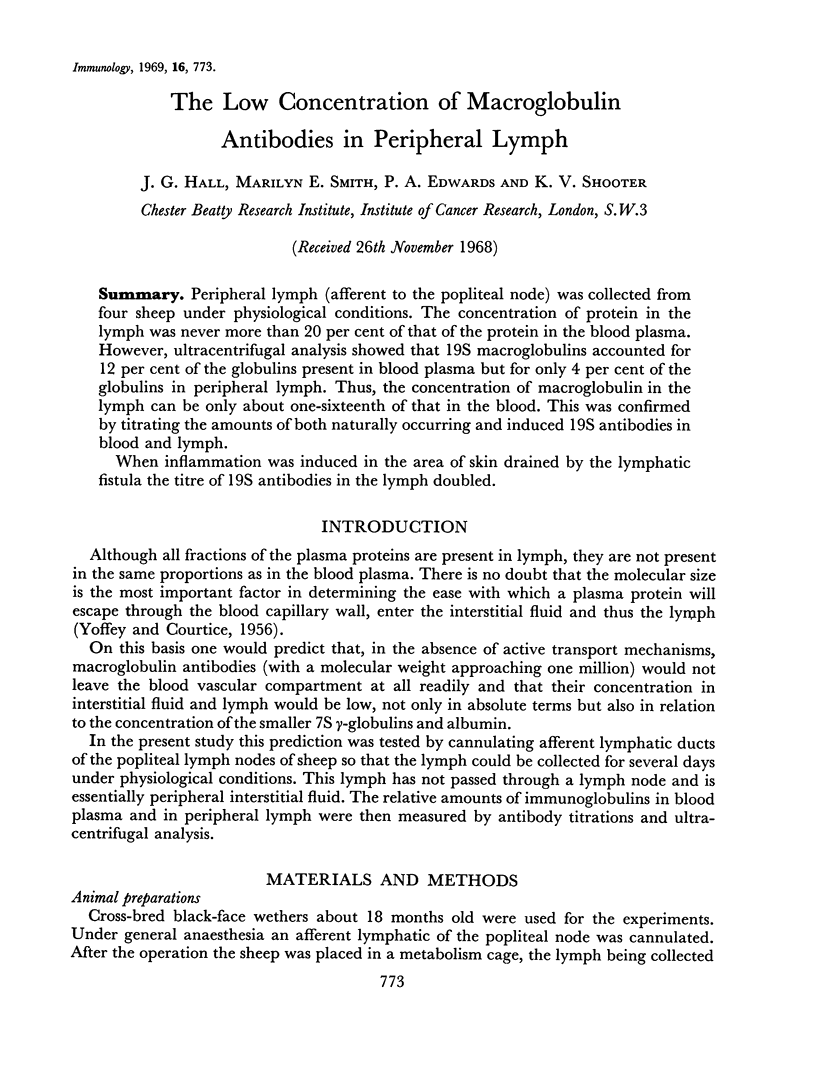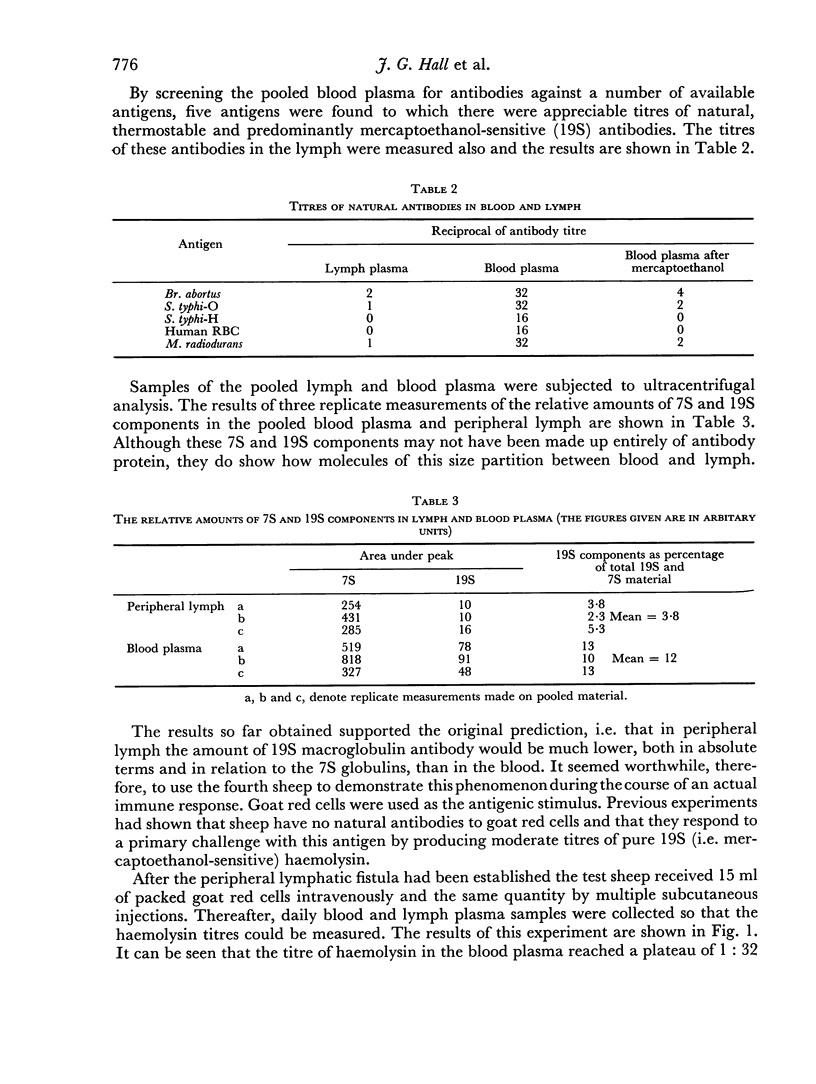Abstract
Peripheral lymph (afferent to the popliteal node) was collected from four sheep under physiological conditions. The concentration of protein in the lymph was never more than 20 per cent of that of the protein in the blood plasma. However, ultracentrifugal analysis showed that 19S macroglobulins accounted for 12 per cent of the globulins present in blood plasma but for only 4 per cent of the globulins in peripheral lymph. Thus, the concentration of macroglobulin in the lymph can be only about one-sixteenth of that in the blood. This was confirmed by titrating the amounts of both naturally occurring and induced 19S antibodies in blood and lymph.
When inflammation was induced in the area of skin drained by the lymphatic fistula the titre of 19S antibodies in the lymph doubled.
Full text
PDF





Selected References
These references are in PubMed. This may not be the complete list of references from this article.
- BENACERRAF B., OVARY Z., BLOCH K. J., FRANKLIN E. C. Properties of guinea pig 7S antibodies. I. Electrophoretic separation of two types of guinea pig 7S antibodies. J Exp Med. 1963 Jun 1;117:937–949. doi: 10.1084/jem.117.6.937. [DOI] [PMC free article] [PubMed] [Google Scholar]
- Brown P. C., Glynn L. E., Holborow E. J. The dual necessity for delayed hypersensitivity and circulating antibody in the pathogenesis of experimental allergic orchitis in guinea-pigs. Immunology. 1967 Sep;13(3):307–314. [PMC free article] [PubMed] [Google Scholar]
- HALL J. G., MORRIS B. The lymph-borne cells of the immune response. Q J Exp Physiol Cogn Med Sci. 1963 Jul;48:235–247. doi: 10.1113/expphysiol.1963.sp001660. [DOI] [PubMed] [Google Scholar]
- HALL J. G., MORRIS B. The output of cells in lymph from the popliteal node of sheep. Q J Exp Physiol Cogn Med Sci. 1962 Oct;47:360–369. doi: 10.1113/expphysiol.1962.sp001620. [DOI] [PubMed] [Google Scholar]
- Moore T. C. Histidine decarboxylase inhibitors and the survival of skin homofrafts. Nature. 1967 Aug 19;215(5103):871–872. doi: 10.1038/215871a0. [DOI] [PubMed] [Google Scholar]
- Paradise L. J., Nungester W. J. Supporting role of vasodilators in inducing regressions of the Ehrlich solid tumor. Proc Soc Exp Biol Med. 1967 Jul;125(3):963–968. doi: 10.3181/00379727-125-32250. [DOI] [PubMed] [Google Scholar]
- Perlmann G. E., Glenn W. W., Kaufman D. CHANGES IN THE ELECTROPHORETIC PATTERN IN LYMPH AND SERUM IN EXPERIMENTAL BURNS. J Clin Invest. 1943 Jul;22(4):627–633. doi: 10.1172/JCI101434. [DOI] [PMC free article] [PubMed] [Google Scholar]


